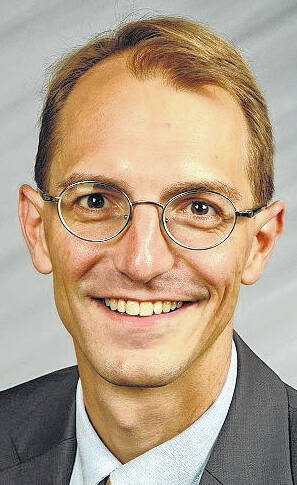
“The cemetery is an open space among the ruins, covered in winter with violets and daisies. It might make one in love with death, to think that one should be buried in so sweet a place.”
— Percy Bysshe Shelley
“Every man should keep a fair sized cemetery, in which to bury the faults of his friends.”
— Henry Ward Beecher
This past weekend, I had the chance to take part in the Delaware County Historical Society’s annual Oak Grove Cemetery Tour. Attendees walk through the cemetery, led by tour guides, and at points throughout the cemetery, reenactors portray various people who played notable roles in the history of Delaware.
I’ve previously portrayed John Van Deman, who was the first mayor of the City of Delaware and the first county prosecutor of Delaware County, in addition to being a notable lawyer in the community and the developer of several neighborhoods, including Van Deman and Darlington avenues. This year, I was playing the part (and telling the history) of Ezra Griswold, whose father is one of the early figures of the City of Worthington, and who moved to Delaware in his 20s, purchasing and printing a newspaper that would, when he sold it to the Thompson family in 1834, be renamed The Delaware Gazette.
During the cemetery tour, the reenactors are largely stationary, standing near the grave of the person they are portraying, and either speaking to a tour group or waiting for the next group to arrive. But in the short gaps between groups, I was struck by how much history is to be found at Oak Grove.
Rutherford B. Hayes and his wife, Lucy, may both be Delaware natives, but they were first buried at Oakwood Cemetery in Fremont and then later reinterred at their longtime home, Spiegel Grove. But Oak Grove Cemetery is a stark reminder of the consistent tragedy and difficult life of Hayes’ mother, Sophia Birchard Hayes. Several years younger than her husband, Sophia moved from Dummerston, Vermont, to Delaware a few years before the future president’s birth. In a span of just four years, Sophia would lose her husband and two of her four children, all of whom are buried with her here in Delaware.
The first of those tragedies came in the form of the death of Sophia’s daughter, Sarah Sophia, who died in 1821 — a year before Rutherford’s birth — at the age of 4. Most historical sources say, simply, that she “died young,” and, indeed, the death of young children in an era before vaccinations, antibiotics, or extensive frontier sanitation was neither surprising, nor uncommon.
A year later, while pregnant with Rutherford, Sophia’s husband, Rutherford Hayes Jr., died suddenly at the age of 35, leaving her seven months pregnant and with two other young children. They were still relatively new to Ohio, and his death left her in dire circumstances. But through her own efforts and the support of her bachelor brother, Sardis Birchard, she and the children moved from their residence on East William Street to a more stable one on West William Street where William Street United Methodist Church now stands.
At this point, Lorenzo, Rutherford’s brother, was 7, and his sister Fanny was 2. With the death of her daughter and husband just nine months apart, Sophia had to hope that her life had been touched by this kind of loss for the last time. Sadly, that was not to be the case. In 1825, when Rutherford was just shy of 3, Lorenzo drowned in the Olentangy River.
I have repeatedly seen it written that Lorenzo died while “skating” on the river. Indeed, the Ohio History Connection website has an article from the Ohio History Journal that says that Lorenzo “drowned while skating on the Olentangy River in January, 1825.” Other sources include similar information. But the family gravestone does not agree. It lists Lorenzo’s date of death as being June 20, 1825. I am not certain when the gravestone was erected, but it appears to be contemporary in time to Sarah’s death in 1866, and may have been paid for by Rutherford, whose only other sibling, Fanny, had died in 1856. At the time of his mother’s passing, Rutherford was a U.S. Congressman.
Oak Grove also contains the graves of Delaware’s founding father, Moses Byxbe, and Frank B. Willis, who also served as governor, and who was campaigning for president when he died moments before a speech at Ohio Wesleyan in 1928. There are many, many other famous figures in Delaware history also interred at Oak Grove.
After several years off during the pandemic, the Oak Grove tour is again an annual event. You can follow the Delaware County Historical Society on Facebook for information about all of their programming, including next year’s tour, likely to be held in October.
David Hejmanowski is judge of the Probate/Juvenile Division of the Delaware County Court of Common Pleas, where he has served as magistrate, court administrator, and now judge, since 2003. He has written a weekly column on law and history for The Gazette since 2005.

